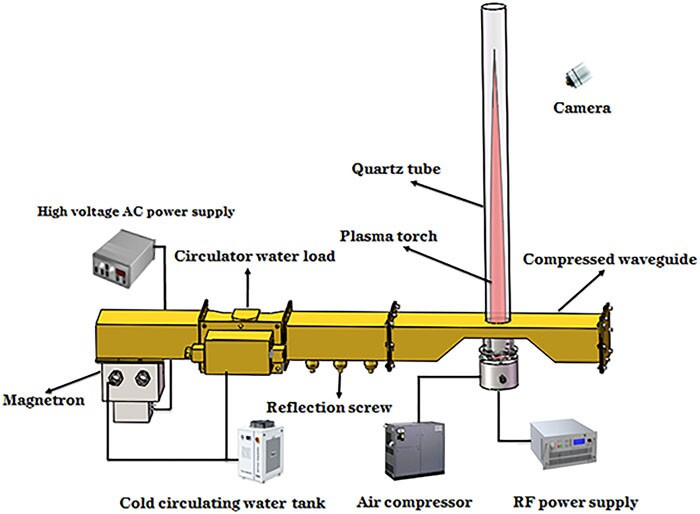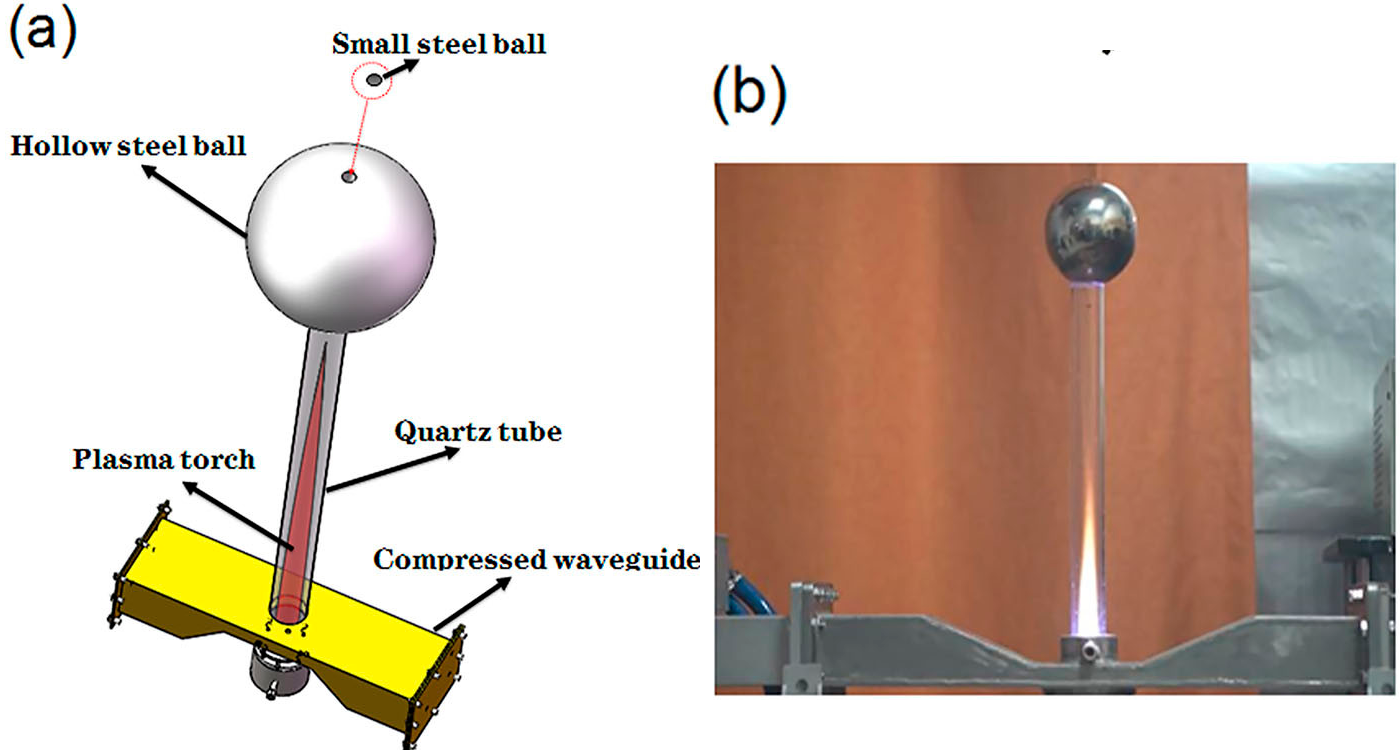Nice bit of work, but not so immediate in terms of application. nice to know and have though..
We are in an era of real innovation with thrust systems as hte demand is also shaping up as well. Never think that we are finished though. We are also long past the days of a flathead V8 been used for decades without much change.
all good.
Electric microwave plasma thruster could rival traditional jet engines
By Loz Blain
May 06, 2020
The flame length and propulsive thrust of this new microwave-accelerated plasma thruster design appear to vary linearly with power application and air speed, making it a potentially promising design for electric aviation
Dan Ye, Jun Li and Jau Tang
A Chinese team has demonstrated a prototype of a microwave plasma thruster capable of working in the Earth's atmosphere and producing thrust with an efficiency comparable to the jet engines you'd find on modern airliners – under laboratory conditions.
Plasma thrusters are already operational on spacecraft as a means of solar-electric locomotion, using xenon plasma, but such things are no use in the Earth's atmosphere, as accelerated xenon ions lose most of their thrust force to friction against the air. Not to mention, they only make a small amount of thrust in the first place.
This design, conceived and built by a team at the Institute of Technical Sciences at Wuhan University, uses only air and electricity, and appears to produce an impressive push that may see it become relevant to electric aircraft applications.
The device works by ionizing air to create a low-temperature plasma, which is blown up a tube by an air compressor. Part way up the tube, the plasma is hit with a powerful microwave, which shakes the ions in the plasma about violently, crashing them against other non-ionized atoms and vastly increasing the temperature and pressure of the plasma. This temperature and pressure generates significant thrust up the tube.
The thruster design uses an air compressor to generate initial air speed, then ionizes air into a plasma and heats it up to high temperatures and pressures using a powerful microwave
Dan Ye, Jun Li and Jau Tang
Part of the secret sauce here is in the flattened waveguide through which the microwaves are fired. Generated by a 1-kW, 2.45-Gh magnetron, the microwaves are sent down a waveguide that's squeezed down to half its height as it approaches the plasma tube. This is done to boost its electric field strength and impart as much heat and pressure to the plasma as possible.
The researchers noticed that, keeping the air flow from the compressor steady, the flame jet in the tube appeared to lengthen when the microwave power was increased. They set about trying to measure how much thrust was being produced, which proved difficult since the thousand-degree plasma jet would destroy a regular barometer.
Instead, they settled on balancing a hollow steel ball on top of the tube, which could be filled with smaller steel beads to change its weight. At a certain weight, the thrust would counteract the gravitational forces pulling the ball down and begin lifting it off the tube, causing it to move and jump about, and the researchers used these measurements, minus the thrust contributed by the air compressor, to work out how hard their new plasma thruster was pushing.
Thousand-degree temperatures would fry a normal barometric measurement system, so the researchers used the plasma thrusters to lift a steel ball weight on the end of the plasma tube, measuring the weight each power and air flow level could lift
Dan Ye, Jun Li and Jau Tang
They tested this across a range of power levels and air flow rates, and despite the somewhat makeshift measurement technique, they found a linear relationship between propulsive thrust and both microwave power and air flow.
In efficiency terms, the propulsion force at 400 W and 1.45 cubic meters of air per hour was 11 Newtons, representing a conversion of power into thrust at a rate of 28 N/kW. Assuming linear extrapolation, the team speculated it could take a Tesla Model S battery capable of outputting 310 kW and turn that into something like an 8,500-N propulsive thrust force.
By means of comparison, the Airbus E-Fan electric airplane uses a pair of 30-kW electric ducted fans, which combine to produce 1,500 N of thrust. That would imply an efficiency of 25 N/kW, which is not quite as good as the first prototype assembled in this lab. The researchers say this thrust efficiency is already "comparable to those of commercial airplane jet engines."
The researchers say they're working on ditching their steel ball testing method for something more reliable and accurate, as well as trying to increase the efficiency of the design. But things certainly look promising for this new plasma thruster idea in electric aircraft propulsion, with a few important caveats.
Firstly, it's not going to be much chop as a replacement for props or ducted fans on an eVTOL, no matter how much quieter it might be, if that plasma comes out at thousand-degree temperatures . And secondly, as pointed out in this excellent Ars Technica analysis, "the airflows are in the region of about 15,000 times lower than those for a full-sized engine. The thrust also has to scale by about four orders of magnitude (meaning the power does, too). Extrapolating linear trends over four orders of magnitude is a good way to be disappointed in life."
Lab results show linear increases in thrust with both air flow and microwave power, although the data points do not include the highest power at the highest air flow
Dan Ye, Jun Li and Jau Tang
Also, for whatever reason, the data points don't show the highest microwave power levels at the highest airspeeds the test rig appears to allow, signaling that things might already be starting to get weird in the lab.
And finally, even if it is as efficient or more efficient than a regular old Airbus engine for a given amount of energy input, the fact remains that aviation fuel carries so much more energy for a given weight than batteries (43 times more, according to The Verge), that motor efficiency improvements barely offer a drop in the ocean.
Still, this is an interesting and novel plasma thruster design, and we're interested to see where things go from here. If it does prove scalable and efficient up to aircraft-friendly levels, it could make a genuine contribution to the emerging field of zero-local-emissions electric aviation.
Check out the prototype running in a short video below, clearly moving that steel ball around.
Plasma thruster prototype
The paper is openly available at AIP Advances.
Source: American Institute of Physics via Ars Technica




No comments:
Post a Comment